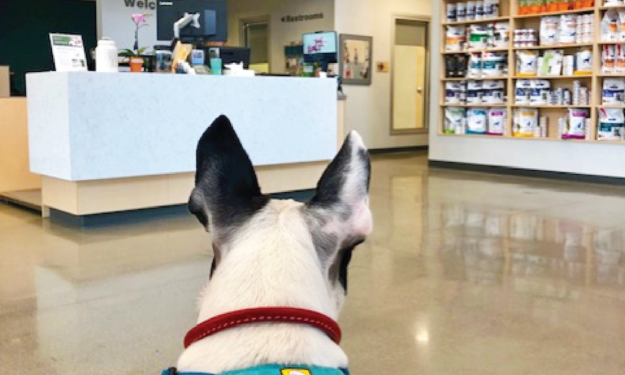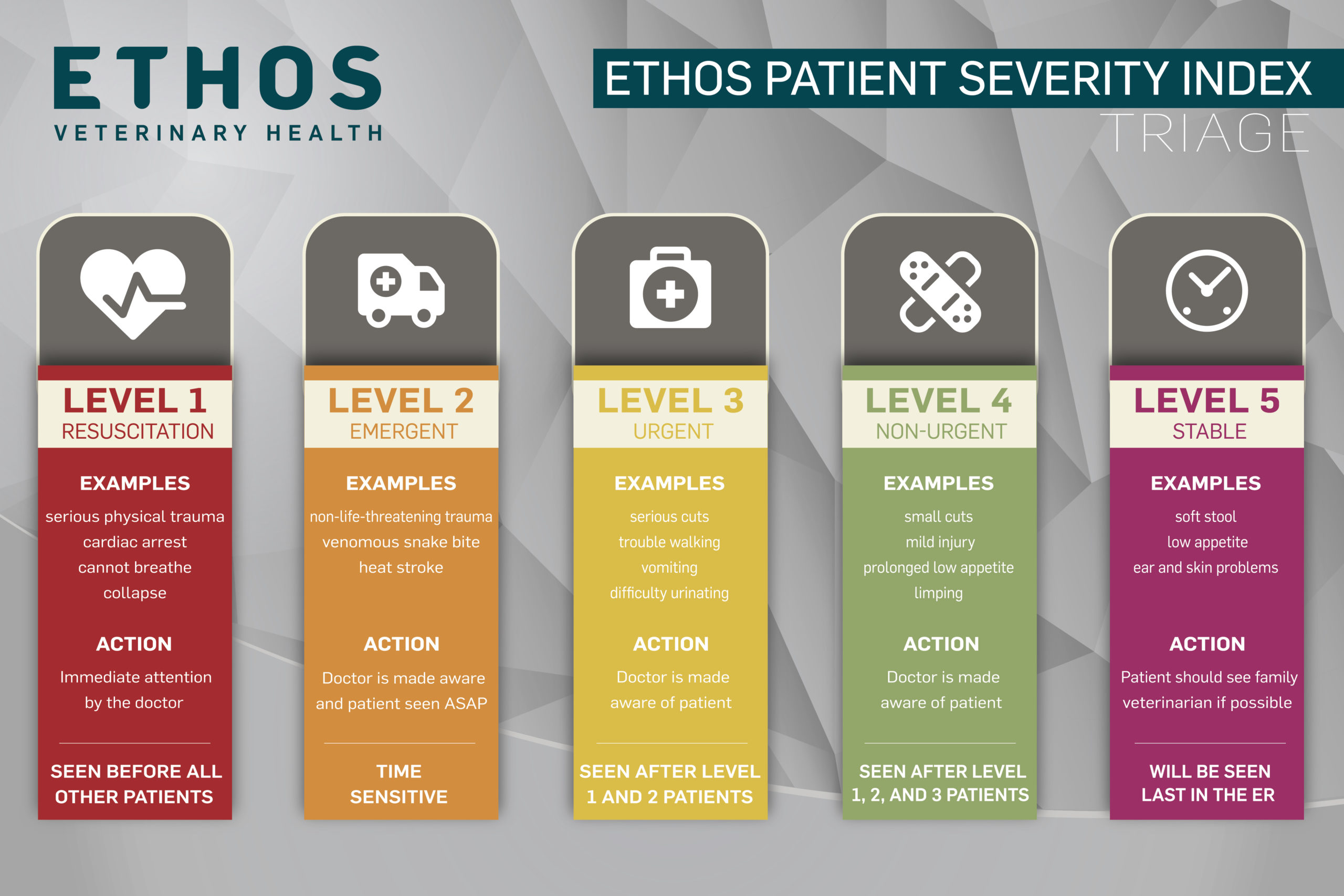Vet Triage: Why Your Pet May Not Be Seen Right Away

When you arrive with your pet as an emergency or urgent care case, you may find yourself waiting a while before your pet is seen. As you’re waiting, you may even notice patients being seen before your pet even if they arrived later, which can be frustrating.
What is Triage?
“Triage” is a medical term that dictates how patients are prioritized in an emergency room setting. Patients with more life-threatening conditions will be treated first, followed by more stable patients. All emergency hospitals, both human and veterinary, follow this same approach to patient care.
For example, if you arrive with your dog at an emergency veterinary hospital for a case of mild vomiting and diarrhea on a Saturday, you may have to wait a while before your pet is seen by an ER doctor. This is due to the patients already being treated with more life-threatening symptoms (who you may not see but are in the treatment areas “out back”) as well as incoming pets with more life-threatening symptoms. At any given time there can be several inpatients being treated by our team.
You can check out our blog Pet Emergencies: What Can’t Wait Until Tomorrow or Monday for a better idea of pet emergency severity.
How are Pets Triaged?
Upon arrival, a veterinary technician will assess your pet. The technician will not diagnose or treat your pet. They will look for things such as respiratory distress, alertness, and ask you what your pet is presenting for and a brief history. They record vitals in your pet’s record and always round an ER doctor on your arrival. Based on this information, the technician will determine how urgent your pet’s case is, what needs to be done, and prioritize your pet in relation to other patients.
Each hospital follows a protocol for checking on your pet at certain time intervals (i.e. every 30 minutes) to ensure nothing has changed.
Once all patients with more urgent cases are stable and an emergency veterinarian is available, your pet will be seen.
Below is our Patient Severity Index that our emergency teams use when evaluating a patient and determining which pets must be seen first (where pets at Level 1 would be seen immediately, and pets at Level 5 will likely experience longer wait times).

Triaging is taking longer than usual
Since the pandemic, the veterinary industry has faced these obstacles which have increased wait times in our emergency departments:
- Twice as many patients are being seen than a year ago (increased pet adoptions, pet owners being home more, etc.)
- A staffing shortage crisis across the veterinary industry has prevented us and many other animal hospitals from being able to hire enough doctors, technicians, and support teams to fully staff our hospitals.
- Safety policies have slowed many hospital workflows in order to keep our teams safe & healthy.
- Other animal hospitals are closing or turning away new patients, and our ERs see the overflow.
What Can You Do as a Pet Owner?
There are a few things you can do as a pet owner to help with the triage process:
- Call ahead: if possible, calling ahead will allow our team to know you’re coming and prepare as best we can. If your pet was in a serious accident or ingested a particular substance, we can have technicians prepare a treatment table with the required equipment and medications as well as have a staff member wait for you in the lobby.
- Gather all your pet’s information: be ready to explain what’s going on with your pet. If you have a copy of their medical records available to bring with you, this will help too.
- Be your pet’s advocate: if you notice your pet worsen while you’re waiting, tell the client care staff immediately.
- Be patient with us: we know how frustrating it can be to spend a few hours in the waiting room on a Sunday afternoon. We always strive to see all patients in a timely manner, and we promise to see your pet as soon as we can. Check out our Waiting Room Tips here.
- Please be kind: Our team is here for you and we care. Even though you may not work with your pet’s emergency veterinarian through the entire visit, all of our technicians, assistants, and support staff are highly trained, educated, and working together (though you may not see it firsthand) to provide excellent care for your pet.
We truly do appreciate your patience and understanding while you’re with us.
Please try to remember: if you’ve been waiting a while in the front lobby, you’re probably having a much better day than the person next to you. We’re here for you, and all the pets in our communities.